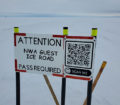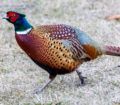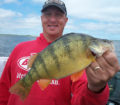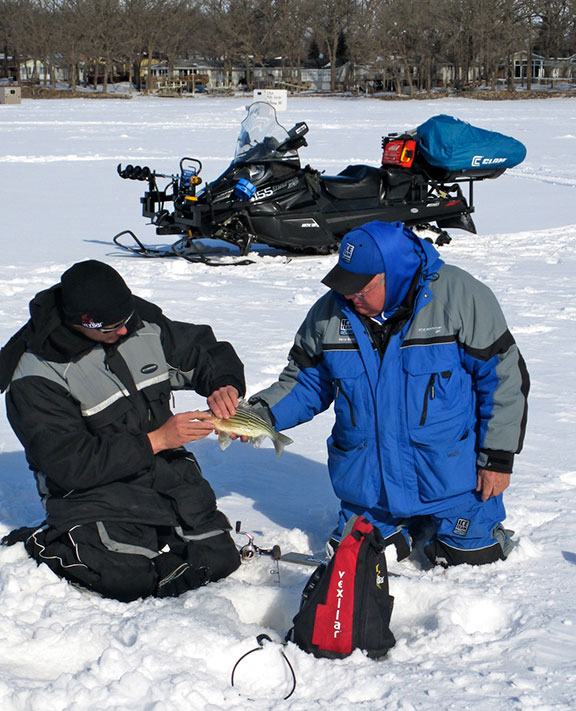By Bob Jensen
Fishing the Midwest Fishing Team
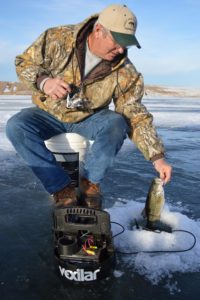
(photo by Bob Jensen) This mid-day largemouth bass ate a tiny jig that Terry Thomsen was working next to a “crib”.
Many years it’s hard to know when the ice fishing season is starting to wind down. Mother Nature controls that, and she does things her own way. Depending on where you live, some years we get to fish through a hole in the ice a couple of weeks into March. In other years, the season is winding down by late February.
I certainly don’t know what the weather is going to do a few weeks from now, but a recent day on the ice reminded me of some of the little things that will enable ice anglers to be successful during the remaining weeks of ice fishing. Following is the re-cap of a recent day of ice fishing.
On this recent day of ice fishing, there were several anglers in our group. We were scattered about an area that was home to several “cribs”. When it comes to fishing, a “crib” is a collection of several trees that are lashed together and sunk into various locations in the lake or pond.
In ponds, these “cribs” attract baitfish, and the baitfish attract larger fish such as crappies and bass. Regulations for sinking these fish-attracting structures vary from state to state. They also vary depending on whether the body of water is private or public. If you’re thinking about creating a crib, make sure you know the regulations regarding doing so.
The anglers in our group located some cribs by employing a sonar unit. The cribs show up very clearly on sonar. Each of the anglers drilled holes that placed their baits within a foot or two of the crib.
Our catch consisted mostly of crappies, mostly medium size but also a few 12 inchers, some bluegills, and every now and then a largemouth bass would eat the bait. Later in the day walleyes got more abundant.
All of us started with different types of baits. A couple of us used spoons, a couple of us used jigs. During the mid-day hours when the sun was most overhead and brightest, the anglers using subtle colored jigs caught the most fish. So we all switched to jigs, but still, we used different colors or sizes, and some of us tipped our jigs with live bait, others used plastic.
We wanted to find out if the fish were truly showing a preference. They were. Tiny jigs with waxworms were the best at mid-day. As the sun got lower in the sky, the fish started to bite better, and they also changed their preferences as to what they wanted to eat.
As the bite picked up, we started tipping our jigs with plastic baits in different sizes and colors. We learned that a Drop Jig tipped with something like a Maki Mino was something that they would eagerly eat. As the sun continued to go down, brighter colors got better, and larger plastics resulted in larger fish. Also, the plastic enabled us to catch more fish per bait than the live bait did. We could get the bait back down the hole faster with the plastic because we didn’t have to re-bait after every fish.
We moved around as the bite got better. We found an area that had more walleyes, and the bigger bass started biting better also. A couple members of our group switched to spoons again, and now they were eagerly eaten by the bass and walleyes. And the fish were behaving differently. Early in the day we could watch them on the sonar move up cautiously and study the bait before either eating it or moving on. As the light decreased and the action increased, they moved to the bait faster and hit it more aggressively. They were willing to eat.
As the ice fishing season continues, an angler’s attention to small details will usually result in larger catches. In fact, that’s true in open water or on the ice, and it’s also true whether the fish are active or inactive. However, when the fish are finicky, paying attention to detail is more important. Keep experimenting until you find what the fish want and you’ll catch more of them.
To see new and old episodes of Fishing the Midwest television, fishing articles and fishing videos, go to fishingthemidwest.com.


